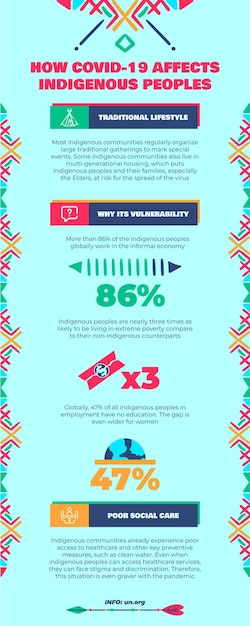Interesting Facts about the Navajo Tribe

The Navajo tribe is one of the largest Native American tribes in the United States.
Navajo Nation covers an area of 27,425 square miles, extending across the states of Arizona, New Mexico, and Utah.
The Navajo language is spoken by a majority of the tribe members, making it one of the most spoken Indigenous languages in the country.
Navajos are known for their intricate and beautiful handwoven rugs and blankets, which often feature vibrant colors and geometric patterns.
The Navajo tribe has a rich cultural heritage, with strong beliefs in traditional customs and practices.
The Navajo reservation houses the largest population of any Native American tribe in the United States.
Navajo culture places a strong emphasis on respect for nature and the land, as the tribe believes in the interconnectedness of all living beings.
The Navajo tribal government is governed by the Navajo Nation Council, which consists of 24 elected representatives.
The Navajo tribe is known for its impressive jewelry-making skills, with silver and turquoise being popular materials used in their designs.
The Code Talkers of the Navajo tribe played a crucial role in World War II by using their native language to transmit coded messages, which greatly contributed to the Allied victory.
The Navajo tribe has a strong connection to their traditional lands, which they believe were given to them by the gods.
The Navajo people have a rich oral tradition, passing down stories, legends, and history through generations.
The Hogan is a traditional Navajo dwelling made of wooden poles and mud, serving as a symbol of sacred space and community.
Navajo medicine men and women, known as hataalii, play a vital role in tribal healing practices and spiritual ceremonies.
In Navajo culture, women hold an esteemed position, often serving as matriarchs of the family and playing important roles in decision-making.
Navajo sandpaintings are intricate designs created on the ground using colored sand, and they play a significant role in healing rituals and ceremonies.
The Navajo people have a deep connection to their traditional livestock, including sheep, goats, and horses, which provide sustenance and serve as a source of pride.
Traditional Navajo clothing consists of woven skirts, blouses, and shirts adorned with elaborate patterns and designs.
The Navajo tribe’s traditional diet includes corn, beans, squash, and wild game, reflecting their connection to the land and nature.
The Navajo reservation is home to some breathtaking natural wonders, including the stunning Monument Valley and the mysterious Shiprock formation.
The Navajo tribe has a strong belief in the power of harmony and balance, as reflected in their Navajo philosophy of Hozho or beauty.
Navajo women have been essential in reviving and preserving traditional weaving techniques, passing down this art form to future generations.
The Navajo tribe has a diverse range of artistic expressions, including pottery, silverwork, painting, and storytelling.
Each Navajo clan is associated with a specific animal or natural element, representing their family lineage and connection to the environment.
The Navajo tribe has a long history of resistance and resilience, overcoming challenges and preserving their culture amidst colonization and oppression.
Traditional Navajo ceremonies, such as the Blessingway and the Enemyway, play an important role in maintaining physical, emotional, and spiritual well-being.
The Navajo tribe’s rich tradition of song and dance serves as a form of storytelling, celebration, and spiritual connection.
Navajo children learn important values and skills, such as respect for elders and the tribe’s customs, through oral teachings and participation in traditional ceremonies.
The Navajo tribe’s ancestral lands are believed to contain sacred places, such as healing springs, which are visited for spiritual renewal and connection to the divine.
Navajo people have a close relationship with the land’s resources, engaging in sustainable practices such as sheep herding and dry farming.
The Navajo tribal council has made efforts to promote renewable energy development, including wind and solar projects, on their lands.
The long-standing Navajo-Churro sheep breed, kept by the tribe for centuries, is highly valued for its wool, which is used in traditional textile production.
Navajo basketry is another celebrated art form, employing intricate designs and natural materials such as willow and sumac.
The Navajo tribe has made strides in preserving and revitalizing their traditional agricultural practices, focusing on sustainable and organic farming methods.
With a deep respect for the environment, the Navajo tribe actively participates in environmental conservation efforts, protecting sacred sites and natural resources for future generations.
Navajo elders play a significant role in the community, sharing wisdom, stories, and ancestral knowledge to preserve the tribe’s cultural traditions.
Navajo children learn the values of hard work and responsibility through participation in traditional tasks such as herding livestock and tending crops.
The Navajo tribe is known for its intricate silver jewelry, often featuring intricate turquoise and coral inlays, worn for ceremonial and everyday purposes.
The Navajo language, which has a complex grammar and tonal qualities, is considered a crucial element of cultural identity and pride.
Navajo pottery often showcases a matte-finish with geometric designs, reflecting the connection between the spiritual and physical worlds.
The Navajo tribe’s deep spiritual beliefs are centered around a complex pantheon of deities, including Changing Woman and Spider Woman.
Navajo men and women participate in various traditional games, including stickball and Navajo shoe game, promoting physical fitness and tribal unity.
The Navajo tribe’s adherence to traditional values and morals has helped maintain a strong sense of community and cooperation within the tribe.
The Navajo tribe’s intricate sandpaintings are often created as a temporary medium, symbolizing the ephemeral nature of life and the impermanence of existence.
The Navajo tribe’s contributions to art, culture, and society are celebrated during events such as the annual Navajo Nation Fair, showcasing the tribe’s talents and heritage.

